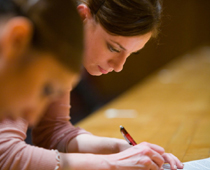
In 1912, the British explorer, Captain Scott, led an expedition to Antarctica.
Writing Recounts
Take on the KS2 English challenge! This quiz is all about writing recounts. Recounts are like telling stories about things that happened.
In 1912, Captain Scott, a brave explorer, went to Antarctica. It didn't go well - he reached the South Pole too late. Bad things happened like accidents and frostbite. Sadly, none of his team came back. Luckily, Captain Scott wrote a diary, so we can still know his story. Diaries are a way of doing recounts.
Test what you know about recount-writing with this quiz!
A Parent's Secret Weapon for Smart KidsTo see a larger image, click on the picture.
1 .
2 .
Which of these connectives are you most likely to find in a recount?
Firstly, secondly, lastly.
Additionally, similarly, however.
Furthermore, in addition, moreover.
First, then, next, meanwhile.
These are known as 'sequencing' connectives. Sequencing connectives are essential to writing about the order in which events occurred. Other connectives may also be used, but are not essential.
3 .
4 .
5 .
6 .
The introduction to a recount usually sets the scene. What does this mean?
The introduction gives stage directions.
The introduction lists the contents of the recount.
The introduction mentions who was involved and where the events happened.
The introduction tells the reader everything that happened.
The introduction usually answers a few of these questions: Who? What? When? Where? How? Why?
7 .
8 .
9 .
**Unlimited Quizzes Await You! 🚀**
Hey there, quiz champ! 🌟 You've already tackled today's free questions.
Ready for more?
Ready for more?
🔓 Unlock UNLIMITED Quizzes and challenge yourself every day. But that's
not all...
not all...
🔥 As a Subscriber you can join our thrilling "Daily Streak" against other
quizzers. Try to win a coveted spot on our Hall of Fame Page.
quizzers. Try to win a coveted spot on our Hall of Fame Page.
Don't miss out! Join us now and keep the fun rolling. 🎉
**Unlimited Quizzes Await You! 🚀**
Hey there, quiz champ! 🌟 You've already tackled today's free questions. Ready for more?
🔓 Unlock UNLIMITED Quizzes and challenge yourself every day. But that's not all...
🔥 As a Subscriber you can join our thrilling "Daily Streak" against other quizzers. Try to win a coveted spot on our Hall of Fame Page.
Don't miss out! Join us now and keep the fun rolling. 🎉

















